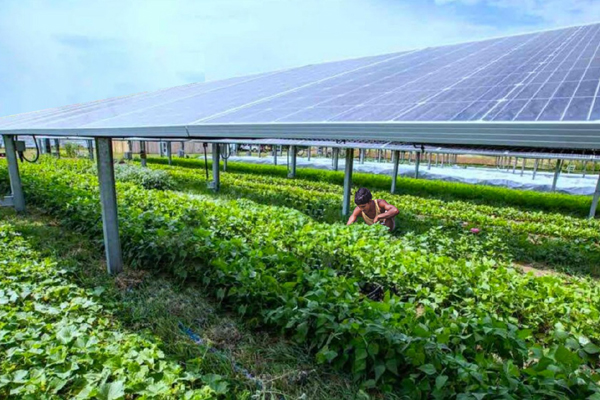Agrovoltaics

Agrovoltaic energy, also known as agrophotovoltaics, consists of using the same area of land to obtain both solar energy and agricultural products. In other words, solar panels coexist with crops on the same surface.
Agrovoltaics, also called agrivoltaics, involves adding solar panels to agricultural land to generate electricity, improve crop yields, and help farmers increase their revenues. The technology utilizes the large areas of available land on a farm needed to capture the direct sunlight needed to make electricity. Agrovoltaic systems offer a sustainable approach to powering the world without relying on fossil fuels and are attracting interest from farmers and investors who understand that preparing for the future starts now.
Agrovoltaics provides an effective, efficient and innovative solution to the competition for land use through the creation of synergies between renewable energies and agriculture, while promoting sustainable rural development and the protection of biodiversity and the ecosystem.
This is one of the main objectives of the so-called Green Deal, which establishes a series of measures aimed at favoring the decarbonization of the sector and in which Agrovoltaics plays a fundamental role.
Agrovoltaics Project:
There are three basic types of agrovoltaics that are being actively researched which are solar arrays with space between for crops, tilted solar arrays above crops, and greenhouse solar arrays. All three systems have several variables used to maximize solar energy absorbed in both the panels and the crops. The main variable taken into account for agrovoltaic systems is the tilt angle of the solar panels. Other variables taken into account for choosing the location of the agrovoltaic system are the crops chosen, panel heights, solar irradiance and climate of the area.
Agrovoltaics corresponds to the use of the resources generated by the generation of photovoltaic energy for agricultural development. Due to the solar panels, the soil on which they are installed is kept more humid and protected from direct sunlight, thus providing a cooler and more prolific environment for the development of plants. With this combination, both parties benefit from the use of each other's resources.
For this practice, fixed support systems are used to raise the solar panels about five meters above the crop field. This allows farm machinery access to the crops below. On the other hand, there are installations that have tracking systems, which allow the panels to be oriented to maximize their efficiency and prevent them from always casting shade in the same place, thus adapting to the needs of the plants.